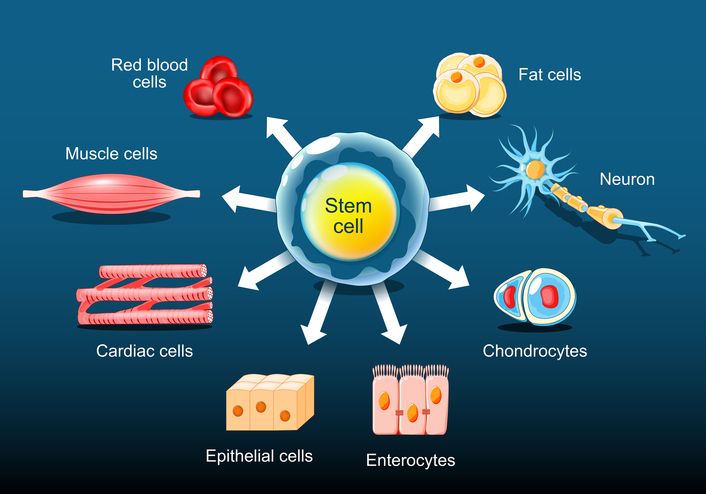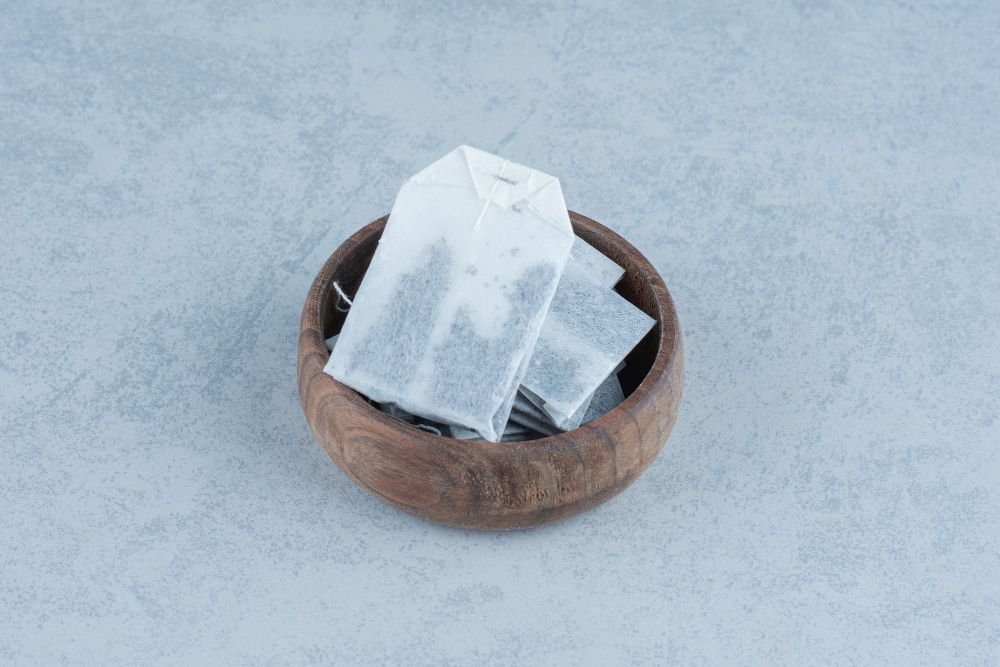

Book Now to Experience
F8 Hair Regrowth Treatment
1 Minute Self-Registration
Date should not be before minimal date
Author: Leila Tan|Updated: 23 July 2024
Hair loss affects a large percentage of the population, especially as people get older. The causes of this phenomenon are multifaceted and may include genetics, hormones, stress, and disease. But how soon can one expect hair to grow back after therapy for hair loss? Can anything be done to speed things up or prevent any further damage?

1
Average Hair Growth Rate: How to Tell How Fast Does Hair Grow?
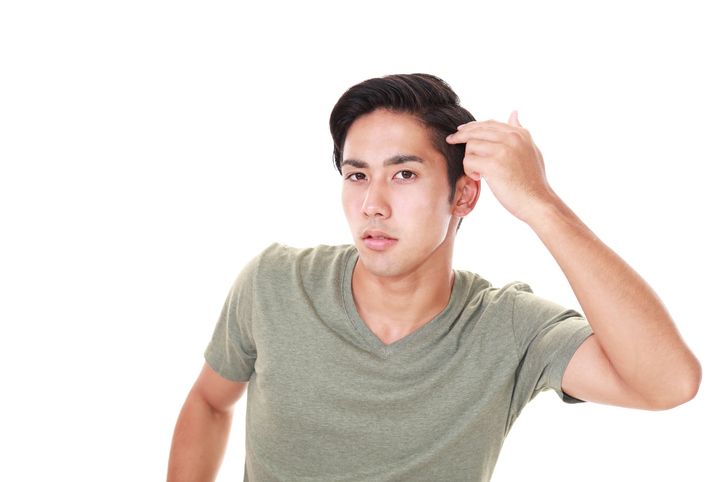
Half an inch (1.25 cm) a month, or about 15 cm (6 inches) per year, is the average rate of hair growth for an average person. Age, genetics, health, diet, hormones, and hair care all have a role. The rate at which one's hair grows might vary greatly from person to person.
You may determine how quickly your hair is growing by comparing its length at different intervals using a ruler or a tape measure. Hair length can be measured in two ways: either from the scalp down to the ends, or from a fixed point on the head, such as the centre of the forehead or the tip of an ear. It's important to measure your hair when it's dry and straight, as wet or curly hair might generate a false reading due to its tendency to shrink.
Taking a picture of your hair once a month and comparing it to the picture from the previous month is another way to monitor your hair's growth. This will show you the length, volume, and overall health of your hair over time.


2
Hair Growth Cycle & Hair Growth Process
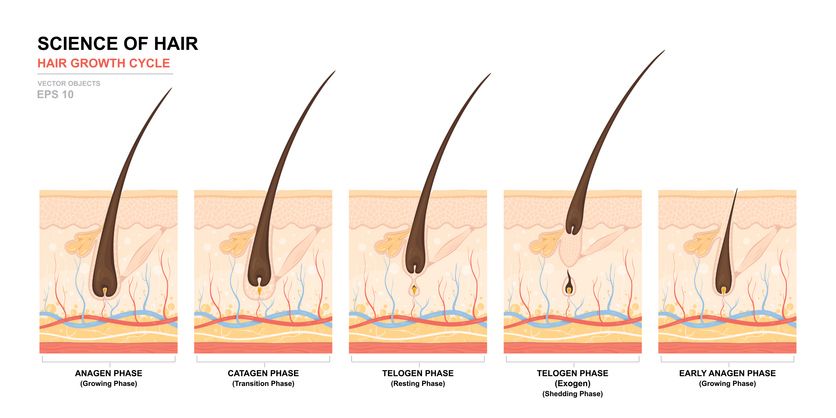
The roots of your hair are in the follicles that are under your head. The roots are made of the protein keratin, which is also found in your nails and skin. The roots are fed by the blood vessels in your head, which also tells them to make new cells. These cells push through the follicle and come out of the head as a hair shaft.
The cuticle, the cortex, and the medulla are the three parts of the hair shaft. The cuticle is the top layer of hair. It keeps the hair from getting damaged and makes it shine. The cortex is the main layer, which is made up of pigment and is what gives your hair its colour and texture. The medulla is the deepest layer, and only thick, tough hair has it.
The hair shaft is not alive, so once it leaves the head, it doesn't grow or change. It can, however, be changed by things like heat, chemicals, sunshine, and physical stress. These things can hurt the surface and cortex of the hair, which can lead to split ends, breakage, dryness, frizz, and a dull look.
Growing hair is not an easy process. It has four different stages, each of which has its own features and length. If you know about these stages of hair growth, you can spot and stop some kinds of hair loss that can affect the quality and amount of your hair.
In general, hair growth cycle breaks into 4 phases:
* Anagen: This is the active growth phase of hair, when the cells at the root of the hair split quickly and add to the hair shaft. Depending on your genes, hormones, and health, this time can last anywhere from two to eight years. How long your hair can grow will depend on how long this time lasts. At any given time, about 85% to 90% of your hair is in this phase.
* Catagen: This is a short transitional phase that lasts about two to three weeks. During this phase, the hair shaft gets smaller and pulls away from the dermal papilla, which gives the hair blood. The hair stops growing and gets ready for the next phase, which is when it rests.
* Telogen: This is the sleeping phase of hair, when the hair follicle stays dormant for about three to four months. During this time, the hair neither grows nor falls out. At any given time, about 10% to 15% of your hair is in this phase.
* Exogen: This is the hair's shedding phase, when the old hair falls out and new hair can grow in its place. During this time, you may lose between 50 and 100 hairs per day, which is normal and not a sign of hair loss.
Read More

3
Types of Hair Loss That Can Affect Hair Growth

If you want your hair to get longer and healthy, you might be curious about how fast it grows and what affects how fast it grows. In this blog post, we'll talk about the basics of hair growth, how to measure it, and how to find the best way to grow hair for your hair type and your goals.
Androgenetic alopecia
Androgenetic alopecia is a common type of hair loss that affects both men and women. It is caused by a mix of genetic and hormonal factors that cause hair cells to shrink over time, resulting in hairs that are thinner and shorter. This type of hair loss generally looks like a receding hairline and thinning crown in men and a diffuse thinning on the top of the scalp in women.
Telogen effluvium
Telogen effluvium is a type of brief hair loss that happens when a lot of hairs go into the telogen phase too soon. This can be caused by stress, illness, medications, or other things. This causes a lot of hair to fall out, and it can last for months. Most of the time, the hair comes back once the cause is gone.
Alopecia areata
Alopecia areata is an autoimmune type of hair loss that happens when the immune system attacks the hair cells and stops them from making hairs. This kind of hair loss can leave patches of baldness on the head or other parts of the body. Alopecia areata has no known cause, but it could be brought on by stress, an illness, or your genes. The hair may grow back on its own or with treatment, but it may also come back or go away completely.


4
How these hair issues affect healthy hair growth
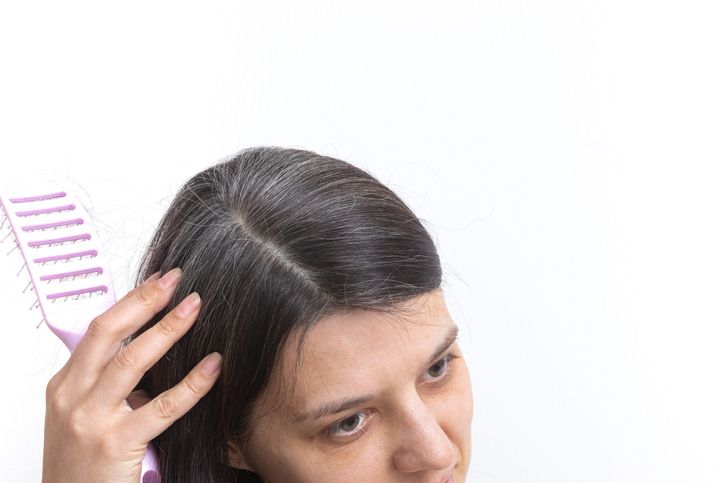
As the length and length of the anagen phase, which is the main growth phase of the hair cycle, affects how fast hair grows. In androgenetic alopecia, the hairs grow slower and smaller, and the anagen phase is shorter. In telogen effluvium, the anagen phase is cut off and many hairs go into the telogen phase too early. This causes hair growth to slow down and hair loss to rise. Damage to the hair cells caused by the immune system interrupts the anagen phase in alopecia areata. This causes patches of hair loss and slow hair growth.
Because of this, all three kinds of hair loss can slow down hair growth by changing the regular hair cycle. But the effects can be different based on how bad the condition is, how long it lasts, and what caused it. Some methods may help restore hair growth or speed it up by focusing on different parts of the hair growth cycle.

Book Now to Experience
F8 Hair Regrowth Treatment
1 Minute Self-Registration
Date should not be before minimal date

5
Is There A Best Way to Make Your Hair Grow?

There are a lot of goods and methods that claim to help your hair grow faster and healthier. But not all of them will work or will be good for your hair type and goals. Before you try any method that claims to promote healthy hair, you should know how they would affect your hair conditions.
Some of the most popular ways to grow hair are:
Taking supplements
Supplements like biotin, vitamin B12, iron, zinc, and omega-3 fatty acids can help your hair grow by giving your body and head the nutrients they need. But they might not work for everyone, and they might cause side effects or combine with other drugs. Before taking any vitamins, you should always talk to your doctor.
Using topical products
Oils, serums, masks, shampoos, conditioners, and sprays can nourish and moisturise your scalp and hair shafts, increase blood flow, avoid damage and breakage, and help your hair grow faster. But they might not get deep enough into the hair cells to fix the real problem behind slow hair growth or hair loss. You should always carefully read the signs and do what they say to do.
Changing your lifestyle
Healthy habits like eating a balanced diet full of protein, vitamins, and minerals, drinking enough water, getting enough sleep, reducing stress, exercising regularly, avoiding heat styling tools, trimming your ends regularly, protecting your hair from sun damage, and using gentle products can improve your overall health and well-being.
Getting treatments
Scalp massages, micro needling, laser therapy, platelet-rich plasma (PRP) injections, and hair transplants can improve blood flow to the follicles, promote new cell production, wake up dormant follicles, and restore lost hairs. But they may be expensive,micro-needling painful, invasive, or dangerous. Before getting any treatments, you should always talk to a trained expert, but here's a tip to get to a non-invasive therapy with great results for you to regain stronger hair!
LLLT (low level laser therapy) may help men and women with inherited hair loss, such as androgenetic alopecia or pattern baldness. LLLT might also help people whose hair is getting thinner because of getting older, worry, medications, or other things. But LLLT isn't good for people who are completely bald, have alopecia that leaves scars, or are sensitive to light. LLLT should be used with care by women who are pregnant or breastfeeding, people who have epilepsy, or people who are taking drugs that make them more sensitive to light. For those who are suitable, New Beauty is bringing you the good news with its F8 Hair Regrowth Treatment to help you grow hair faster.


6
How F8 Treatment Can Repair Damaged Hair & Promote Hair Growth
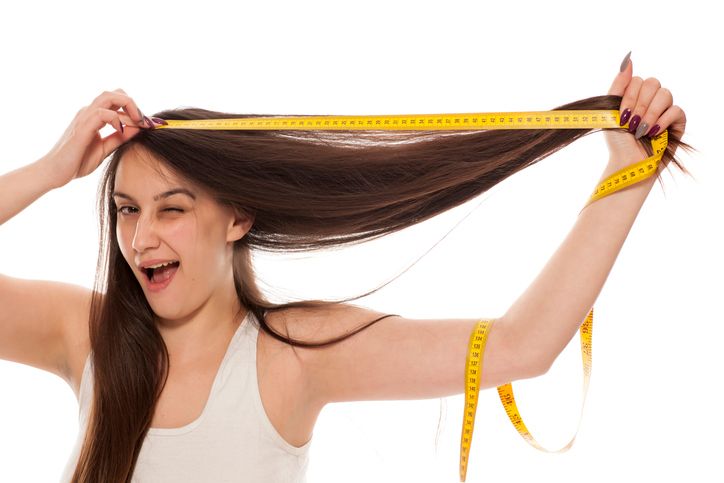
The F8 Hair Regrowth Treatment is a non-invasive way to treat hair loss that makes hair grow back better by using the hair follicles, hair papilla, and blood vessels in the head. A hair growth serum is used at the end of the laser treatment. This medical-grade essence cleans and unblocks hair shafts by getting rid of oil, dirt, and dust that have gotten stuck on the head. This is good for the health of your head.
With the F8 Hair Regrowth Treatment device, the therapist spreads the low-level laser energy widely over the head to stimulate the hair follicles and hair papilla. The energy given off speeds up the flow of blood through the capillaries, which gives hair follicles the nutrients they need to grow and makes the head healthy.
As soon as the laser is done, the specialist will spread the hair growth serum all over your scalp. Low-energy lasers help the serum get into the hair more easily. This medical serum opens up clogged pores, soothes the scalp, and stops the scalp from making too much oil so that the water-oil balance stays the same.

7
Conclusion

Many people who care about their hair's health and appearance place a premium on rapid hair growth. The rate at which hair grows is affected by a number of variables, including heredity, diet, hormones, and environmental stresses. However, delayed hair growth can occur as a result of ageing, stress, sickness, or damage in certain persons. Their sense of dignity and assurance may suffer as a result.
Thankfully, you can speed up hair development and get the hairstyle you want with LLLT. Depending on the equipment and the procedure, LLLT can be performed either at home or at a medical clinic, but it is best to do it professionally, which you should give F8 a try! By taking the above-mentioned steps that help with promoting hair growth, your hair shafts can grow better with stronger roots. Book a trial today and enjoy the healthy hair you deserve!
FAQ
1.What is uneven hair loss?
Alopecia, which is another name for hair loss disease, is a condition that affects how and where hair grows on the scalp and other parts of the body. Causes of hair loss disease include genes, hormones, medical conditions, medications, stress, and infections.
2.How does the health of your skin affect hair growth?
Scalp health is how the skin and hair cells on the head are doing. A healthy head is a good place for hair to grow and keeps infections, inflammation, and irritation from happening. A healthy scalp also helps keep the natural balance of oils and wetness on the hair shafts, which keeps them from getting damaged or breaking.
3.What is a hair bulb, and how does it connect to a disorder that causes hair to fall out?
A hair bulb is the bottom part of a hair strand that is connected to the hair follicle. There are living cells in the hair bulb that split and grow to make new hair. The dermal papilla, a small structure at the bottom of the follicle, sends blood and nutrition to the hair bulb. Hair loss disease can change the way the hair bulb and follicle work and look, which can slow or stop hair growth.
4.Why hair growth and hair fall may depend on your age and gender?
The speed at which hair grows and falls out depends on many things, such as genes, hormones, nutrition, stress, and health. Age and gender are also important factors that affect how fast hair grows and how fast it falls out. Most of the time, hair growth slows down as you get older because your hair follicles become less active and create thinner, shorter hairs. The hormone dihydrotestosterone (DHT), which makes men more likely to get male pattern baldness, also makes hair loss worse as people age. Changes in hormones can also cause women to lose hair. This can happen during menopause or pregnancy. But the speed at which hair grows and falls out varies from person to person. Some people may grow or lose hair faster or slower than others.
5.Which fruits promote healthy hair growth?
Strawberries, oranges, and avocados are just a few examples of fruits that promote hair development. Vitamin C, which is abundant in strawberries, is necessary for the synthesis of collagen and the maintenance of healthy hair. Vitamin C, along with folic acid and vitamin B1, both found in oranges, have been shown to stimulate hair follicles and encourage growth. The vitamin E, biotin, and healthy fats found in avocados are great for your scalp and hair.

Book Now to Experience
F8 Hair Regrowth Treatment
1 Minute Self-Registration
Date should not be before minimal date
Recommended Articles
COPYRIGHT© NEW BEAUTY MANAGEMENT LIMITED 2025. ALL RIGHT RESERVED.


